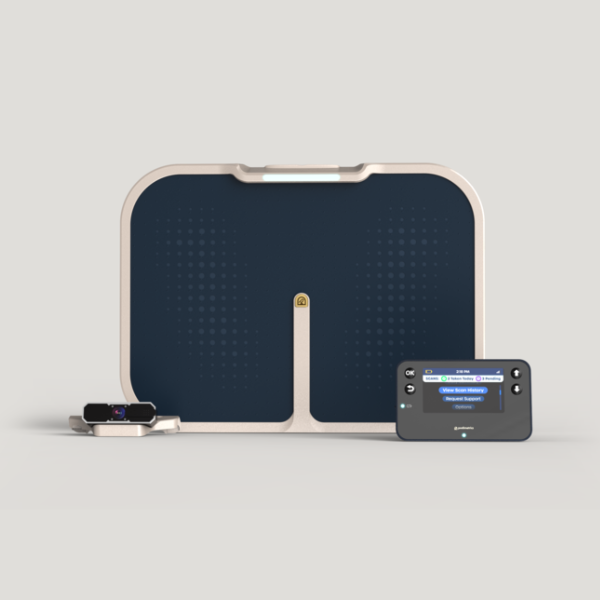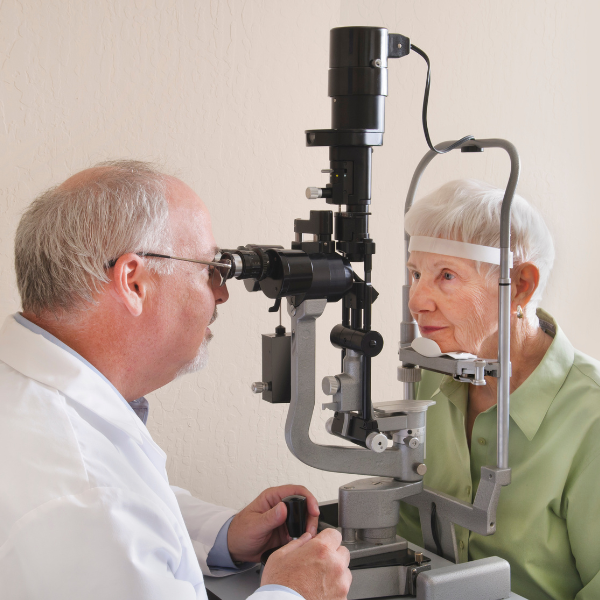Diabetic foot ulcers are a common and serious complication for people with diabetes. They occur when high blood sugar levels lead to nerve damage and reduced circulation in the feet, which can cause small cuts, blisters, and sores to become infected and difficult to heal. If left untreated, diabetic foot ulcers can lead to amputation and other serious health problems.
Preventing diabetic foot ulcers is crucial for people with diabetes, as it helps to reduce the risk of serious complications and improve overall health and quality of life. Early detection and proper treatment of diabetic foot ulcers can greatly improve the chances of a full recovery, making it important to monitor the feet closely and take proactive steps to prevent the development of ulcers.
Overview of the Article
In this article, we will discuss the causes and symptoms of diabetic foot ulcers, as well as the most effective interventions in preventing them. We will also provide tips on how to prevent diabetic foot ulcers and the steps that can be taken to help reverse them if they do occur. Additionally, we will cover the do’s and don’ts of diabetic foot care, and the importance of regular check-ups with a healthcare professional.
Causes of Diabetic Foot Ulcers
Diabetic foot ulcers occur when high blood sugar levels lead to nerve damage and reduced circulation in the feet, making it difficult for small cuts, blisters, and sores to heal. This can result in the development of infections, which can cause further damage and lead to serious complications. Other factors that can increase the risk of developing diabetic foot ulcers include poor foot care, ill-fitting shoes, and walking on hard surfaces without proper cushioning.
Common Symptoms of Diabetic Foot Ulcers
The symptoms of diabetic foot ulcers vary depending on the severity of the condition, but some common signs include redness, swelling, pain, and the formation of open sores on the feet. In some cases, people with diabetic foot ulcers may also experience tingling, numbness, or a loss of feeling in the affected area.
Importance of Early Detection and Treatment
Early detection and treatment of diabetic foot ulcers is crucial for reducing the risk of serious complications and improving the chances of a full recovery. Prompt treatment can help to prevent the spread of infection and reduce the risk of amputation, making it important to monitor the feet closely and seek prompt medical attention if any symptoms of diabetic foot ulcers occur. Regular check-ups with a healthcare professional can also help to identify the early signs of diabetic foot ulcers and provide the appropriate treatment and care to prevent their progression.
Daily Foot Temperature Monitoring
Daily foot temperature monitoring is an effective way to prevent diabetic foot ulcers, as it can help to identify changes in foot skin temperature that may indicate the early development of a problem. Regular monitoring can help to detect early signs of diabetic foot complications, such as Charcot foot, and allow for prompt treatment to prevent further progression of the condition.
Home Monitoring Devices for Diabetic Foot Ulcers
Home monitoring devices, such as remote temperature monitoring devices, can provide an accurate and convenient way to monitor the health of the feet on a daily basis. These devices can measure the temperature of the foot skin and alert the wearer to any changes that may indicate the development of a diabetic foot ulcer.
The Role of Foot Skin Temperatures in Detecting Diabetic Foot Ulcers
The temperature of the foot skin is a key indicator of the health of the feet and can help to detect the early signs of diabetic foot ulcers. Higher-than-normal temperatures can indicate the presence of an infection, while lower-than-normal temperatures can indicate reduced circulation and an increased risk of developing a diabetic foot ulcer.
Results of Randomized Controlled Trials on the Efficacy of Home Monitoring
Studies have shown that home monitoring devices can be highly effective in detecting diabetic foot ulcers, with some studies reporting a significant reduction in the number of patient-years with a diabetic foot ulcer (DFU) in study participants who used the devices. In one randomized controlled trial, the data collected from home monitoring devices was shown in figure 1 to clearly demonstrate the impact that daily foot temperature monitoring can have in preventing diabetic foot ulcers. The results of this study provide strong evidence of the efficacy of home monitoring devices in preventing diabetic foot ulcers and improving overall foot health for people with diabetes.
The Importance of Proper Foot Care
Proper foot care is essential for preventing diabetic foot ulcers. Regular cleaning, moisturizing, and inspecting the feet for cuts, blisters, or other signs of injury can help to reduce the risk of developing a foot ulcer. Wearing comfortable, well-fitting shoes that provide adequate support is also important, as is avoiding walking barefoot or wearing shoes that do not fit properly.
The Do’s and Don’ts of Diabetic Foot Care
When it comes to diabetic foot care, there are several important “do’s” and “don’ts” to keep in mind. Some of the key “do’s” include:
- Regularly inspecting and cleaning the feet
- Wearing comfortable, well-fitting shoes
- Keeping the feet moisturized
- Seeking prompt treatment for cuts, blisters, or other injuries to the feet
Some of the key “don’ts” to avoid include:
- Walking barefoot
- Wearing tight-fitting or uncomfortable shoes
- Ignoring cuts, blisters, or other injuries to the feet
Charcot Foot Prevention and Management
Charcot foot is a serious complication of diabetes that can lead to the development of foot ulcers. To prevent Charcot foot, it is important to maintain good blood glucose control, avoid high-impact activities, and seek prompt treatment for any foot injuries. If you have already been diagnosed with Charcot foot, your healthcare provider can work with you to develop a management plan that may include the use of braces, physical therapy, or other interventions to help prevent further progression of the condition.
Importance of Regular Check-Ups with a Healthcare Professional
Regular check-ups with a healthcare professional, such as a podiatrist or diabetes specialist, are an important part of diabetic foot care. During these check-ups, your healthcare provider can examine your feet, monitor your blood glucose levels, and provide any necessary treatments or recommendations to help prevent the development of diabetic foot ulcers. By staying vigilant and working closely with your healthcare provider, you can help to reduce your risk of developing this serious complication of diabetes.
Overview of Treatment Options for Diabetic Foot Ulcers
Diabetic foot ulcers can be treated, but reversing the condition can be a complex and challenging process. Treatment options for diabetic foot ulcers may include wound care, off-loading or pressure relief, antibiotics, and in severe cases, surgery. The choice of treatment will depend on the severity of the ulcer, the underlying cause, and the overall health of the patient.
The Role of Wound Care in Diabetic Foot Ulcer Healing
Wound care is a critical component of the treatment of diabetic foot ulcers. This may include cleaning the wound, removing any dead or infected tissue, and applying appropriate dressings or other wound care products. In some cases, topical antibiotics or other treatments may also be used to help promote healing.
Importance of Prompt and Proper Treatment for Diabetic Foot Ulcers
Diabetic foot ulcers can quickly progress and lead to serious complications, including amputation. Prompt and proper treatment is essential for reversing diabetic foot ulcers and preventing these complications. This may include regular wound care, as well as other interventions, such as antibiotics or surgery, as needed. By working closely with your healthcare provider, you can ensure that you receive the proper treatment and care you need to help reverse your diabetic foot ulcer and reduce your risk of serious complications.
Summary of Key Points
Diabetic foot ulcers are a common complication of diabetes, and early detection and treatment are critical to prevent serious complications such as amputation. Home monitoring devices, such as daily foot temperature monitoring, can play an important role in detecting early signs of diabetic foot ulcers. Proper foot care, including regular check-ups with a healthcare professional and adhering to do’s and don’ts of diabetic foot care, can also help prevent diabetic foot ulcers. If a diabetic foot ulcer does develop, prompt and proper treatment, such as wound care and other interventions, can help reverse the condition.
Final Thoughts on Preventing Diabetic Foot Ulcers
Preventing diabetic foot ulcers is essential for maintaining foot health and reducing the risk of serious complications. By being vigilant about daily foot temperature monitoring, proper foot care, and regular check-ups with a healthcare professional, you can take steps to prevent diabetic foot ulcers from developing.
Daily Foot Temperature Monitoring and Proper Foot Care
To prevent diabetic foot ulcers, it’s essential to make daily foot temperature monitoring and proper foot care a part of your diabetes management routine. Invest in home monitoring devices, such as remote temperature monitoring devices, to detect early signs of diabetic foot ulcers. Follow the do’s and don’ts of diabetic foot care, and schedule regular check-ups with a healthcare professional to ensure that any potential issues are caught early and treated promptly. By taking these steps, you can help prevent diabetic foot ulcers and maintain healthy feet for years to come.





